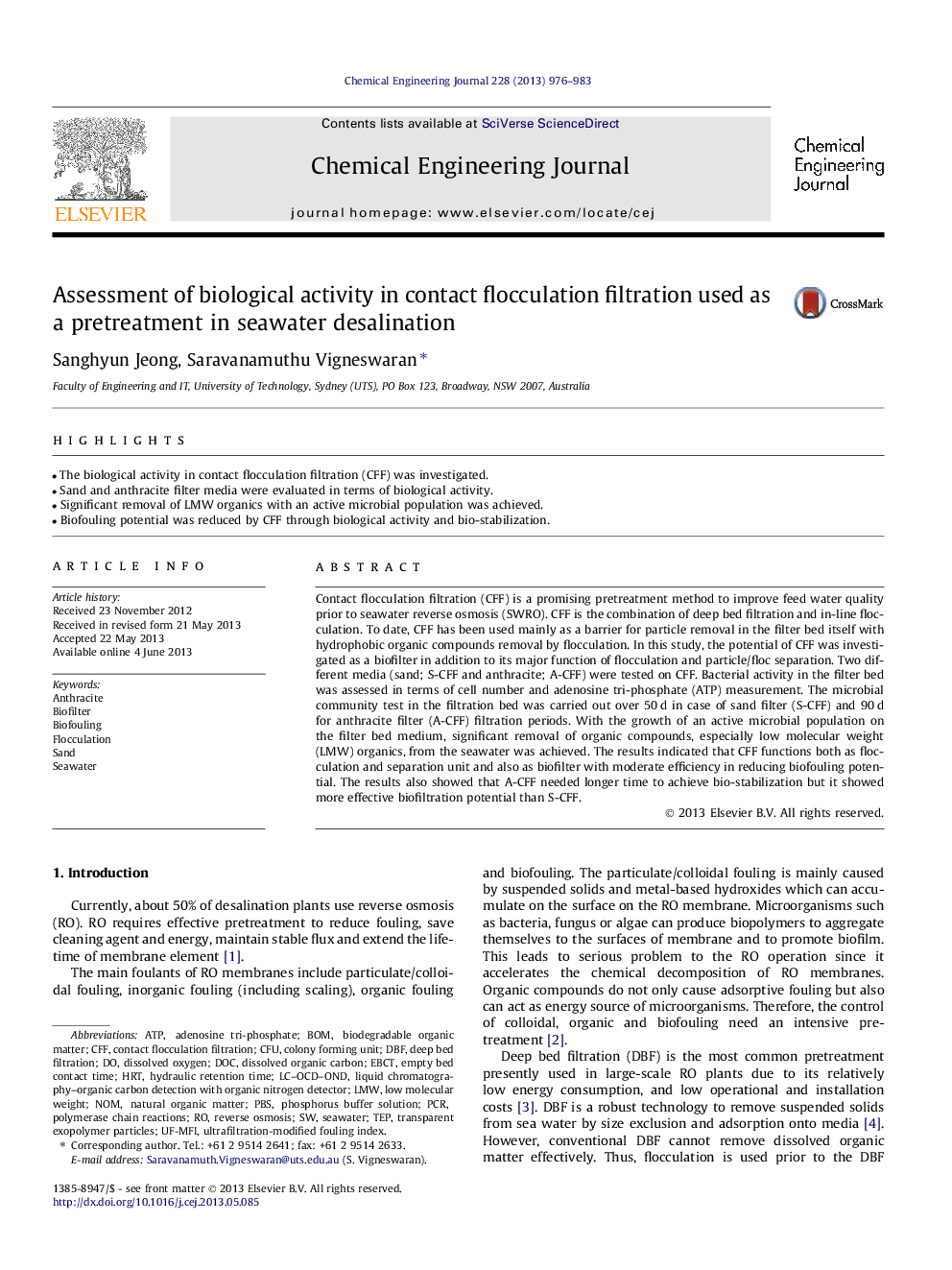| Article ID | Journal | Published Year | Pages | File Type |
|---|---|---|---|---|
| 6587626 | Chemical Engineering Journal | 2013 | 8 Pages |
Abstract
Contact flocculation filtration (CFF) is a promising pretreatment method to improve feed water quality prior to seawater reverse osmosis (SWRO). CFF is the combination of deep bed filtration and in-line flocculation. To date, CFF has been used mainly as a barrier for particle removal in the filter bed itself with hydrophobic organic compounds removal by flocculation. In this study, the potential of CFF was investigated as a biofilter in addition to its major function of flocculation and particle/floc separation. Two different media (sand; S-CFF and anthracite; A-CFF) were tested on CFF. Bacterial activity in the filter bed was assessed in terms of cell number and adenosine tri-phosphate (ATP) measurement. The microbial community test in the filtration bed was carried out over 50Â d in case of sand filter (S-CFF) and 90Â d for anthracite filter (A-CFF) filtration periods. With the growth of an active microbial population on the filter bed medium, significant removal of organic compounds, especially low molecular weight (LMW) organics, from the seawater was achieved. The results indicated that CFF functions both as flocculation and separation unit and also as biofilter with moderate efficiency in reducing biofouling potential. The results also showed that A-CFF needed longer time to achieve bio-stabilization but it showed more effective biofiltration potential than S-CFF.
Keywords
Related Topics
Physical Sciences and Engineering
Chemical Engineering
Chemical Engineering (General)
Authors
Sanghyun Jeong, Saravanamuthu Vigneswaran,
